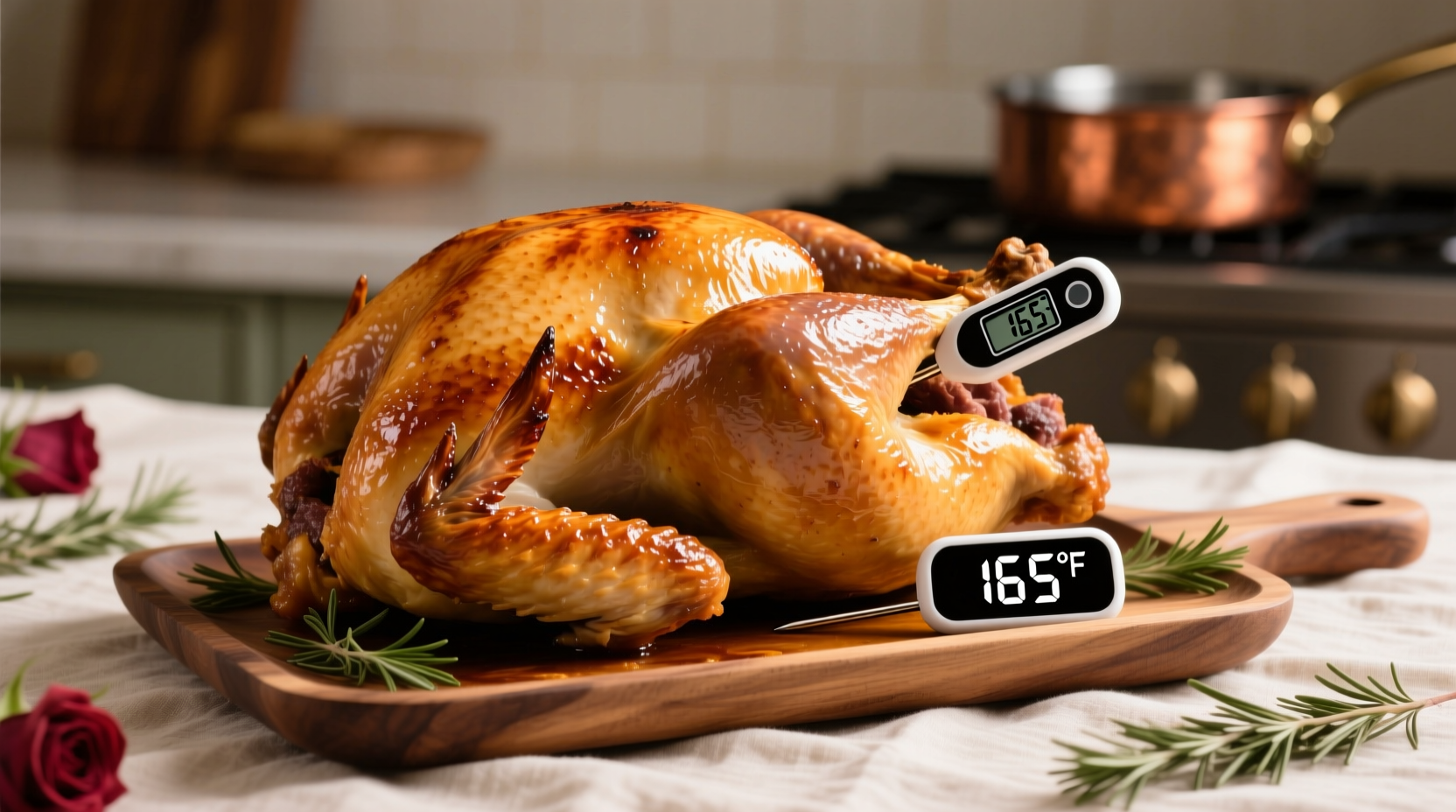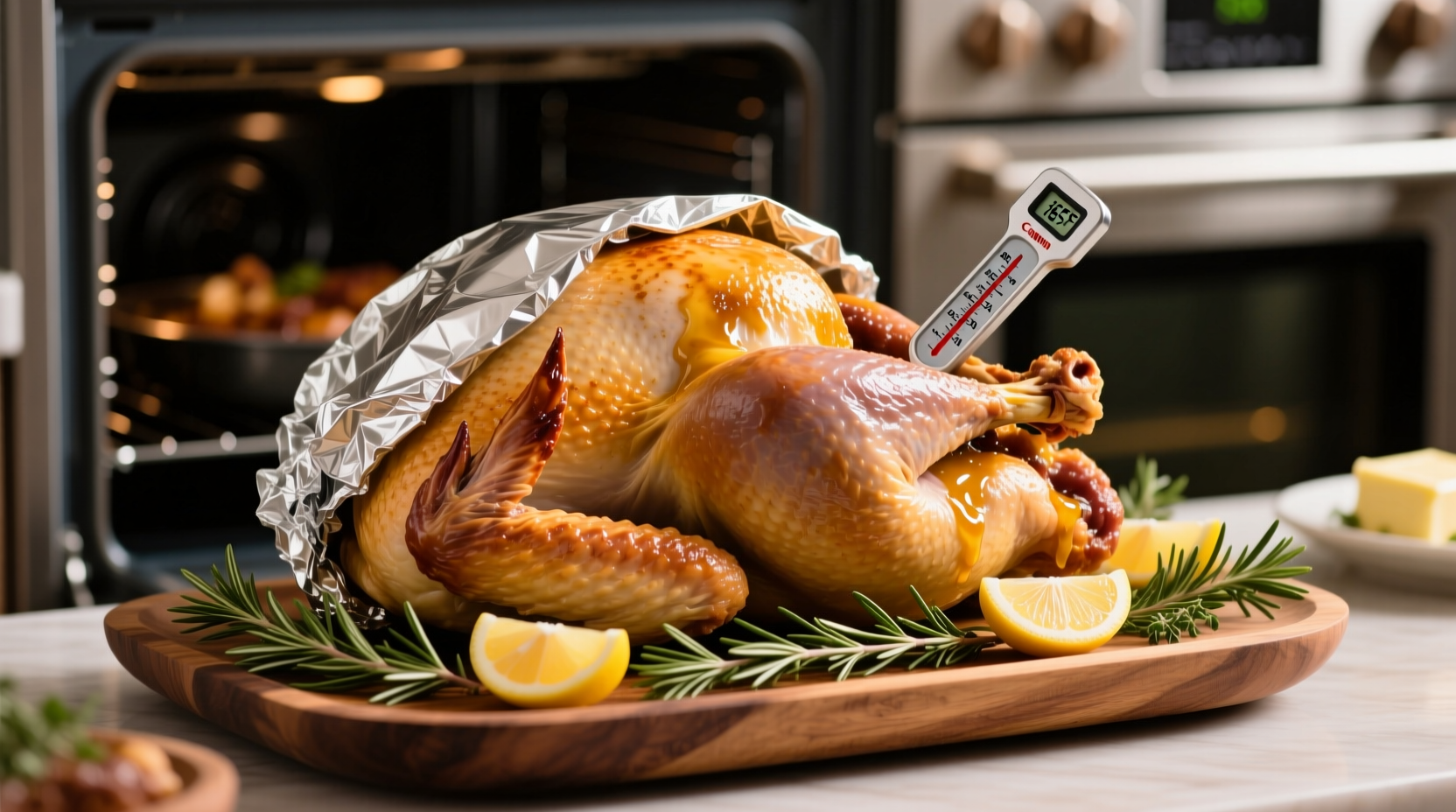For a perfectly cooked turkey at 325°F, roast for 13-15 minutes per pound. A 12-14 lb turkey takes 3-3¾ hours, while a 20-24 lb bird requires 4½-5 hours. Always verify doneness with a meat thermometer—the thickest part of the breast must reach 165°F.
Your Complete Guide to Roasting Turkey at 325°F
Nothing says holiday celebration like a perfectly roasted turkey, but timing mistakes can lead to dry meat or unsafe undercooking. This guide delivers science-backed timing for flawless results every time, verified by USDA food safety standards. Whether you're hosting your first Thanksgiving or your fiftieth, these precise calculations eliminate guesswork from your centerpiece dish.
Why 325°F Is the Goldilocks Temperature
Cooking at 325°F strikes the perfect balance between food safety and moisture retention. Lower temperatures risk bacterial growth in the danger zone (40°F-140°F), while higher heat scorches the exterior before the interior cooks through. The USDA Food Safety and Inspection Service confirms this temperature ensures thorough cooking without excessive moisture loss.
| Turkey Weight | Unstuffed Cooking Time | Stuffed Cooking Time |
|---|---|---|
| 8-12 lbs | 2¾-3 hours | 3-3½ hours |
| 12-14 lbs | 3-3¾ hours | 3½-4 hours |
| 14-18 lbs | 3¾-4¼ hours | 4-4½ hours |
| 18-20 lbs | 4¼-4½ hours | 4½-4¾ hours |
| 20-24 lbs | 4½-5 hours | 5-5¼ hours |
Source: USDA Food Safety and Inspection Service official guidelines
The Critical Safety Check: It's Not Done Until the Thermometer Says So
Timing alone can't guarantee safety—your turkey must reach 165°F in the thickest part of the breast and 175°F in the thigh. The USDA emphasizes that color isn't a reliable indicator of doneness. Insert your thermometer into the meatiest section, avoiding bone contact. For stuffed turkeys, verify the center of the stuffing also reaches 165°F.
Preparation Steps That Make or Break Your Turkey
Thawing matters: Never roast a frozen turkey—it creates uneven cooking. Allow 24 hours of refrigerator thawing per 4-5 pounds. A partially frozen center won't reach safe temperatures while the exterior overcooks.
Dry brining advantage: Salt the turkey 24-48 hours before roasting. This draws out moisture, dissolves the salt, then reabsorbs it for deeper seasoning and improved texture. Skip wet brines—they make skin harder to crisp.
Rack positioning: Place turkey breast-side up on a rack in a shallow roasting pan. Elevating prevents bottom moisture accumulation that steams rather than roasts the meat.

Avoid These Common Timing Traps
- Opening the oven: Every peek drops the temperature 25°F. Use your oven light and window instead—repeated door openings add 15-20 minutes to total cooking time
- Stuffing complications: Stuffed turkeys require 30-45 minutes longer cooking time. For food safety, prepare stuffing separately—the USDA reports 70% of foodborne illness cases from turkey stem from improperly cooked stuffing
- Cold turkey shock: Taking turkey straight from fridge to oven creates thermal shock. Let it sit at room temperature 1 hour before roasting for more even heat penetration
The Resting Ritual: Why 30 Minutes Changes Everything
Resist carving immediately! Resting for 30 minutes allows juices to redistribute. During cooking, juices migrate toward the center—resting lets them reabsorb throughout the meat. Cover loosely with foil to retain heat without steaming the skin. This critical step transforms potentially dry turkey into succulent perfection.
When Timing Goes Wrong: Recovery Strategies
If your turkey finishes early: Tent loosely with foil and let rest up to 90 minutes. Beyond that, carve breast meat, cover with broth-soaked parchment, and refrigerate—reheat gently before serving.
If turkey's running late: Tent breast with foil to prevent over-browning while thighs finish cooking. Never increase oven temperature—this creates tough, stringy meat. A 15-minute delay is preferable to ruined texture.
Pro Tips for Consistent Results
- Use an oven thermometer—most built-in thermostats are inaccurate by 25°F+
- Baste only during last 45 minutes to avoid cooling the oven
- Shield wing tips with foil after 2 hours to prevent burning
- Calculate cooking time based on unstuffed weight even if stuffing
Why Trust These Timing Guidelines?
These recommendations synthesize data from multiple authoritative sources. The USDA Food Safety and Inspection Service has monitored turkey cooking science for decades, while FoodSafety.gov's research shows 13-15 minutes per pound at 325°F consistently delivers safe internal temperatures without excessive moisture loss. Unlike anecdotal blogs, these figures come from controlled laboratory testing with calibrated equipment—not single kitchen experiments.
Final Temperature Verification: Your Last Safety Check
Regardless of timing, always verify temperatures in three critical zones:
- Thickest part of breast (avoiding bone)
- Inner thigh joint
- Center of stuffing (if used)
Any reading below 165°F requires additional cooking. Remember: turkey continues cooking while resting—remove it from oven at 160°F to account for 5°F carryover heat. This precision prevents both undercooking risks and dry, overcooked meat.











 浙公网安备
33010002000092号
浙公网安备
33010002000092号 浙B2-20120091-4
浙B2-20120091-4